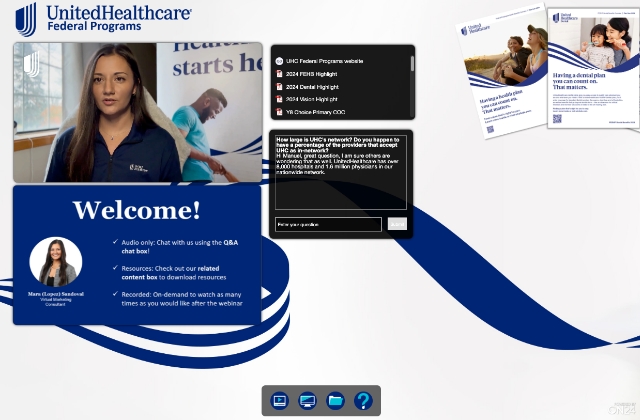Four Segmentation Strategies for Effective Financial Services Marketing

The financial services industry is broad and diverse. From the products and services sold, to the types of customers being served, marketers within the industry can have very different roles and responsibilities.
However, one element is consistent across the industry: the need to build and maintain trust. Historically, this was done by building relationships and sharing expertise in person. Today, the financial sector is digital by default — regardless of whether the audience consists of consumers looking for insurance plans, investment advisors recommending products or institutional investors managing assets.
But even with the shift to digital channels, building trust still relies on many of the same foundations. For customers, trust comes when they are given the information that matters to them, allowing them to feel listened to and comfortable enough to make an informed decision. It also comes when they feel that the financial services firm has the knowledge and expertise to manage their finances on their behalf, or to provide sufficient coverage when needed.
So, how exactly can financial services marketers use digital channels to do this effectively and at scale? The answer is personalization.
How effective personalization and segmentation can improve results in financial services

While trust is a potentially difficult quality to define and measure, there is a common marketing concept that can act as both a sign of both trust and of commercial intent. That metric is conversion, the rate at which a prospect or existing customer takes a desired action.
For conversions, the impact of personalization is clear. Data from the 2024 Financial Services Digital Engagement Benchmarks Report reveals that:
-
- Engagement with CTAs within personalized experiences grew almost seven times faster (121% vs. 18%) than those within non-personalized ones.
- Meeting bookings within personalized experiences grew by 73% in 2023, compared to just 40% across other financial services webinars.
Elsewhere, other research highlights the importance of personalization within financial services:
-
- 78% of financial services customers state they would stay loyal to their bank if they received personalized customer service. However, only 44% of banks are delivering on this expectation. (Source: J.D. Power)
- 72% of financial services customers agree that “product offers are more valuable when they are tailored to my personal needs” while 62% agree that “I prefer to do my own research for banking products.” (Source: Forrester on behalf of Blend).
- 86% of financial institutions say that personalization is a clear, visible priority for the company and its digital strategy — and 92% plan to invest further in personalization. (Source: Dynamic Yield by Mastercard)
Given the value of personalization, marketers need to think about how they will change engagement methods and align their personalization strategy to their goals.
Fortunately, personalization is made easier by one simple fact: digital channels provide you with valuable first-party data. By using attributes among prospects and customers, financial services marketers can create personalized offers by segmenting audiences.
While it would be well beyond the scope of this post to provide examples for every area of financial services, here are some ways in which marketers can segment their audience and personalize offers for two of them — insurance and member enrollment, followed by advisor enablement.
Segmentation suggestions for insurance and member enrollment

For financial services marketers focusing on member enrollment, targeting marketing activity depends on a host of factors. They range from the types of insurance plans being offered, to who is making the purchase decision — whether that be an individual employee, their employer or a third-party acting on their behalf.
Just as important is where a potential customer is in terms of their customer journey. Engagement rates with digital sources of information can be a valuable indicator of whether someone is ready to buy or renew, if they are at risk of cancellation or whether they are in the early stages of making a decision.
The table below provides just a few ways in which marketers could segment their audience based on these attributes.
| By plans | By persona | By member risk profile | By enrollment status | By territory | By member engagement level |
| Short-term | Employer | High | Enrolled | West | High |
| Annual | Employee | Medium | Enrolled by renewal upcoming | South | Medium |
| Personal | Broker | Low | Not enrolled, previous member | East | Low |
| Group | Agent | Non-standard or speciality | Never enrolled | North | Never engaged |
Idea 1 for insurance and member enrollment: Personalize calls-to-action within webinars targeted at employees
Webinars are a great way to engage both existing and potential healthcare plan members — particularly when looking to engage large numbers of employees who have a plan through their workplace.
A webinar program can also be run with a broader theme to interest the audience, such as this example from UnitedHealthcare that featured a wellness stretch break. This and other excellent examples of financial services webinars are included in this lookbook.

A way to get more results from such webinars is to create offers and calls-to-action based on the level of engagement each member has and your goals for each. For example, highly-engaged members may be good prospects for upsell opportunities, while for those with low engagement, it might be important to confirm their details and make them aware of their benefits and coverage.
| Member engagement level | Your goal | Examples of personalized content offers |
| High | Upsell additional products or coverage. | Call-to-action for special limited-time offer for existing members. |
| Medium | Maintain engagement and nurture for further products. | Download financial planning checklist — acts as a soft introduction to other types of product and coverage that they should be considering. |
| Low | Driver further engagement. | Link to on-demand webinar on healthy living. |
| Never engaged | Confirm they are fully onboarded with all information collected (e.g., family member details, health records).
Drive initial engagement. |
Call-to-action for them to confirm and update their details.
Link to content hub covering member benefits. |
| Fallback (unknown) | Identify prospect.
Confirm they are fully onboarded with all information collected (e.g., family member details, health records). |
Call-to-action for them to confirm and update their details. |
Idea 2 for insurance and member enrollment: Personalize assets, messaging and offers on a member’s content hub
Content hubs can act as excellent opportunities to encourage self-service by members, leading to increased satisfaction, reduced customer service costs and increased revenue.
Typically, such hubs may include generic iformation along with links to documents and support that are specific to that member. But there is also an opportunity to present assets, offers and messaging that rather than being generic, is personalized based on that contact.
For example, the type of plan that a member holds can be used to drive performance against key goals. These might include referral offers for those with personal plans, while those holding a group plan might be provided with selected offers from third parties.
| Type of plan held by contact | Your goal | Examples of assets, messaging and offers on member content hub |
| Short-term | Reduce customer service costs.
Upsell to longer-term plans. |
Links to FAQs and coverage documents.
Special discount offer when choosing to switch to annual plan. |
| Annual | Reduce customer service costs.
Upsell additional plans |
Links to FAQs and coverage documents.
Suggested additional products or coverage that may be of interest. |
| Personal | Upsell additional plans.
Drive referrals. |
Suggested product that may be of interest.
Offer — refer a friend for $100 gift voucer. |
| Group | Increase member and employer satisfaction.
Drive affiliate and referral revenue from update of third-party offers. |
Provide details of named key contact / representative.
Member-exclusive offers and discounts from chosen partners and providers. |
| Fallback (unknown) | Identify and qualify prospect. | Ask to either login, register or answer a few simple questions. |
Segmentation suggestions for advisor enablement

Advisors play a key role in helping financial services firms with their go-to-market strategies, by making recommendations and selling products to end customers.
For financial services marketers targeting advisors, they need to make sure that not only do advisors have the information they need to sell such products — they also need to continuously engage them to keep these products front-of-mind.
By segmenting advisors into groups, relevant and personalized content can be delivered to them based on their key attributes. This can be particularly useful when promoting learning and certification opportunities, given that the 2024 Financial Services Digital Engagement Benchmarks Report saw a 32% year-over-year rise in the number of certifications issued per attendee and a 58% increase in the number of tests taken.
The table below gives a few ways in which advisor groups can be broken down by various attributes.
| By product | By persona | By investment history | By advisor certification history | By advisor priority | By advisor engagement level |
| Alternative investments and structured products | Large firm or institutional advisors | Significant or frequent | 2+ certificates issued | High | High |
| Group savings and investment plans | Boutique firm advisors | Limited or occasional | 1 certificates issued | Medium | Medium |
| Personal insurance and savings plans | Independent advisors | None | No certifications issued | Low | Low / never engaged |
Idea 1 for advisor enablement: promote career-related offers by persona and firm size
Marketing that speaks to an individual’s needs will always have the potential to drive engagement — and a good example of that is to assist someone’s career aspirations.
Advisors working within larger firms or institutions are likely to have very different career paths and goals than those who work independently. The former group is likely looking for opportunities to climb the career ladder, while independent advisors are looking to build and maintain their own business.
By promoting offers that are likely to be the most compelling for each segment, marketers can increase overall engagement — enabling their firm and its products to stay front-of-mind.
| Persona or firm size | Their needs | Offers that are personalized to their needs and likely to drive engagement |
| Large firm or institutional advisors | Gain a promotion or new opportunity.
Increase volume and upsell opportunities to existing businesses. |
On-demand certification program.
Invite to market trends webinar with opportunities for new products and plans. |
| Boutique firm advisors | Scale their existing book of business.
Keep up-to-date on the most compelling plans and products. |
Downloadable assets and collateral to share with clients.
Product/plan/fund information with performance data and commission/fees. |
| Independent advisors | Build their own practice.
Gain peer-support from other independent advisors. Identify plans and products that provide long-term revenue or recurring commission. |
E-book on best practices for success as an independent advisor.
Invitation to virtual peer networking event or forum. |
| Fallback (unknown) | Identify and qualify advisor. | Link to the most popular career-related asset behind a download form with key data fields. |
Idea 2 for advisor enablement: tailor offers based on investment history
Financial services firms will want to reward advisors who consistently sell their products or bring in large amounts of capital. They also want to encourage advisors who do not sell as much to increase volume over time.
Marketers can support these goals by personalizing offers by investment history. This might include invites to exclusive events for top advisors, while consideration-based content is likely more suitable for those with little past investment history.
That said, an advisor’s investment history is a lagging indicator, so it might not predict future activity. Engagement with content could be an alternative method, acting as a leading indicator that can predict which advisors may have intent or interest in promoting plans and products in the future.
| Persona or firm size | Your goal | Personalized offer |
| Significant or frequent | Maintain and grow existing investment activity. | Invitation to an exclusive event for top advisors.
Awards ceremony for top advisors. |
| Limited or occasional | Increase volume and/or frequency of investments. | Promotion detailing an exciting new product, plan or fund.
Offer to book a one-on-one advisor success call. On-demand certification program. |
| None | Get advisor to make a first sale of a product. | invitation to a webinar on why they should recommend plans and products for your firm.
Downloadable material detailing the benefits for advisors when choosing your firm. |
| Fallback (unknown) | Identify and qualify advisor. | LInk to the most popular career-related asset behind a downloadable form with key data fields. |
How ON24 can help you re-invent your financial services digital marketing
ON24 provides financial services marketers with powerful tools to improve their performance, including engaging webinars, comprehensive content strategies, and insightful customer engagement data. By utilizing our platform, you can deepen customer loyalty through continuous education and accessible brand resource hubs. Discover how ON24 can transform your marketing efforts by watching our on-demand demo today.
